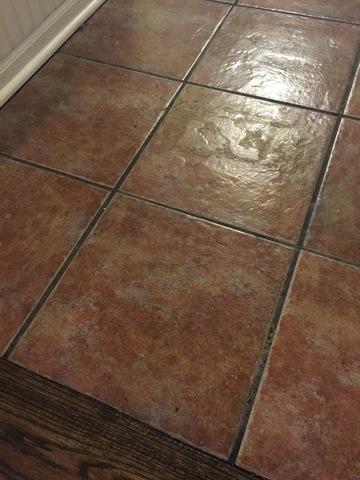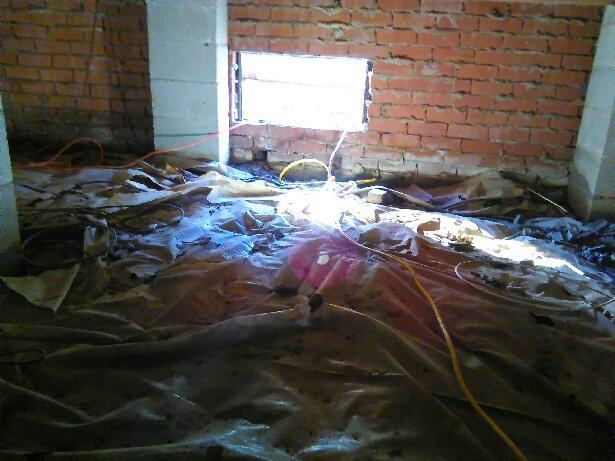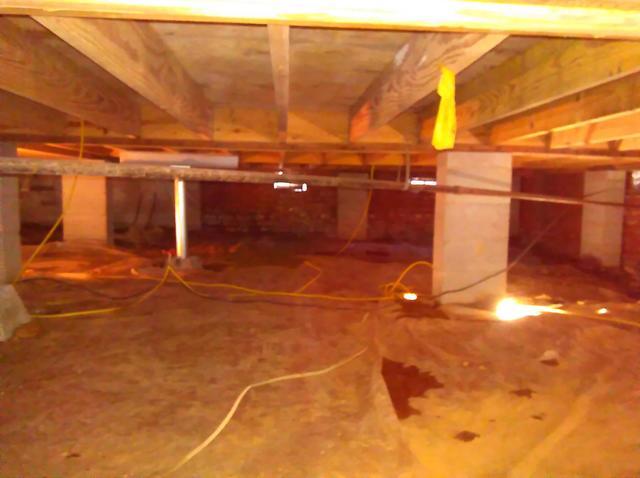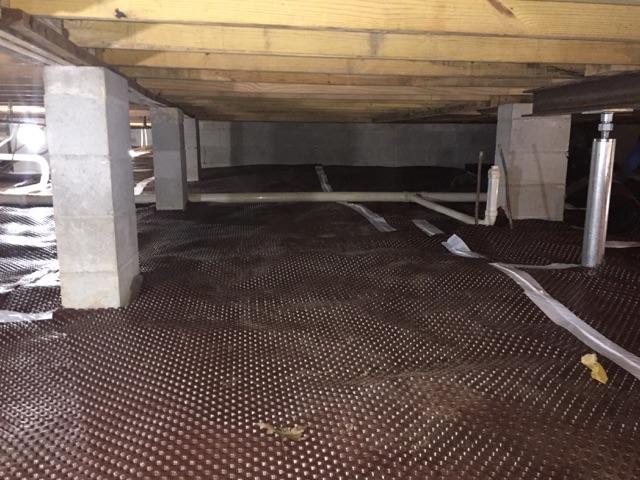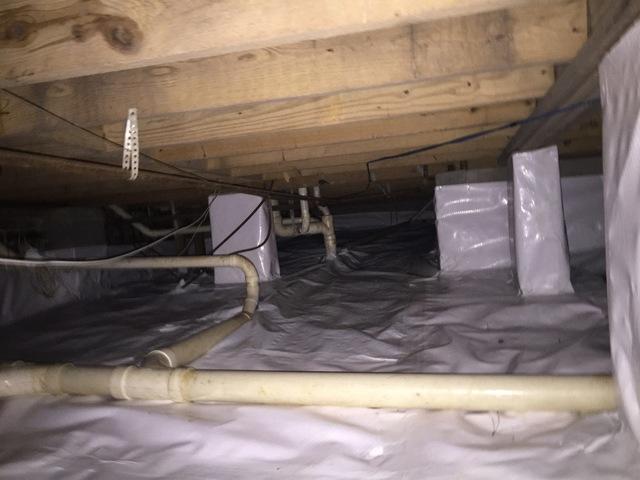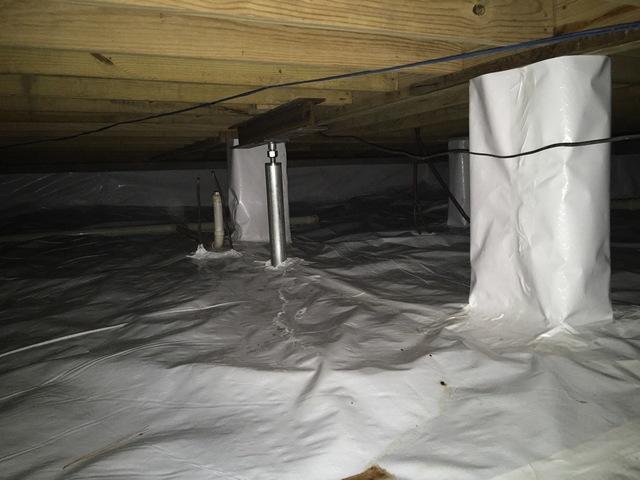Crawl space rescue: moisture ruining new hardwood floors
Challenge
The homeowners underwent a huge home remodel project in November 2013. When the ceramic tile flooring was pulled up, mold was found on the underside of the tile. Given the scope of the project they were already working on, they decided to wait to have the crawl space encapsulated to stop further moisture damage. New hardwood floors were installed throughout the downstairs, replacing the original ceramic tile. Within a period of 6-8 months, the floor started to show signs of weakness- giving at seams. Within about a year of the install, a rippling effect could be see where the new boards were no longer lying flat. Upon returning from a week long beach vacation, the homeowners found a tunnel running through the living room under the area rug. The moisture from the underside of the house had forced 2 boards up, creating a tunnel (see pictures). You can also see in the before photos that plastic was originally down in this crawl space. Clearly, that wasn't enough to stop moisture problems. This is a common misconception with homeowners. It is not uncommon to hear "well, I have plastic down there so I am good." This case is a good illustration of why an every day plastic vapor barrier just won't get the job done.
Solution
What these customers were experiencing is a very common case. Unfortunately, it had affected their beautiful and new hardwood flooring. Our team installed a full CleanSpace® encapsulation system with a sump and dehumidifier. The installation was a textbook case, and the crew didn't encounter any unusual surprises. You can see from the pictures that the customer had also previously had us out to do some structural repairs. You can see SmartJacks in some of the pictures that indicate this.
After the old plastic was gathered and discarded, the team laid drainage matting throughout the crawl space. Crawl space liners rest directly on the crawl space floor. If your crawl space is flooding, water can be trapped underneath, never making it to your perimeter drain.The raised dimples on our CleanSpace® Drainage Matting gives the water flooding into your crawl space a channel underneath your crawl space liner. This directs the water flooding your crawl space to your perimeter crawl space drain and sump pump system.By installing CleanSpace® Drainage Matting, the crawl space is protected, and water is directed to your drainage system. Read more here about the drainage matting thought process.
The CleanSpace® system was then installed aroound the entire crawl space. You can see from the pictures that the CleanSpace goes up the walls, but stops just short. This is done on purpose. We don't advise that it is necessary to go all the way to the floor joists, but customers crtainly have the option to do that if they so choose. You run the risk of voiding your termite contract if you opt to do so, as inspectors wouldn't be able to check your home for signs of termite damage.
CleanSpace® is a 20 mil thick plastic liner, similar to a pool liner, that can be fitted in your crawl space to completely seal off your home from the earth. It has multiple layers of plastics with different characteristics of flexibility and puncture and tear resistance. Put together with 2 layers of polyester cord reinforcement, the material is incredibly durable. It will last as long as your house, and it will stay put.
A sump pump was then installed. You can read in depth about sumps here, but a sump pump is your main line of defenses against flooding. It is the mechanism that will drain water out of the crawl space completely.
Our SaniDry™ CX was then installed. The self-draining dehu can remove up to 109 pints of water per day in the crawl space, without ever needing to have its collection tray emptied. It would empty, if needed, to the sump pump that was installed.
The vents were sealed completely around the perimeter of the house. It is another common misconception that vents should be opened and closed during different times of the year. Read more about that here.
From start to finish, the homeowners goals were accomplished. The house is isolated from the earth which prevents not only moisture damage, but creates heathier air inside of the home, and prevents mold growth.
The homeowner would later post this on our website:
"We knew there was a moisture problem stemming from the crawl space, because there was mold on the underside of the flooring we pulled up during a remodel. We didn't want to admit we needed to address our crawl space so we just kind of ignored it. We paid the price when we installed brand new hardwood flooring throughout our downstairs. After a short period of time, we noticed rippling in the floors, and in one area, a board completely popped up. We caved and had Redeemers Group encapsulate the crawl space. Everyone that was at our house was repectful and polite; not what you'd typically expect. They did a really good job. They were there when they said they would be, and they finished when they said they would. Hard to get excited about your crawl space, but we know they did a good job and that we needed to do it."
Project Summary
Foreman: Philip King

